Is There a Tuberculosis Vaccine? New Research Brings Fresh Hope in 2025
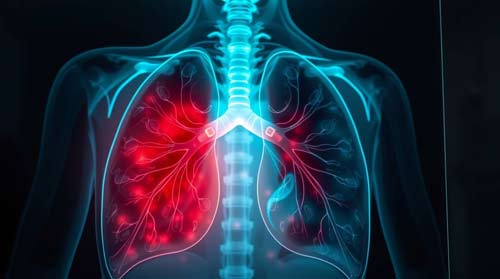
Introduction
Tuberculosis claims 1.6 million lives annually, yet the question remains: is there a tuberculosis vaccine that effectively protects adults? Despite the century-old Bacillus Calmette–Guérin (BCG) vaccine’s availability, its limited efficacy in preventing adult pulmonary TB has left a critical gap in global disease control efforts.
The burden of tuberculosis continues to grow worldwide, with the WHO reporting 10.6 million new cases in 2021—a 4.5% increase from the previous year. Approximately one-quarter of the world’s population carries Mycobacterium tuberculosis infection, creating an enormous reservoir for potential disease. However, recent developments in tuberculosis vaccines offer renewed optimism in the fight against this persistent pathogen. The M72/AS01E vaccine candidate has demonstrated promising results, showing a 50% reduction in pulmonary TB cases in initial studies.
The current TB vaccine landscape includes:
- 17 vaccine candidates in clinical development
- Various platforms including viral vector, protein subunit, and mRNA approaches
- The newly established WHO Tuberculosis Vaccine Accelerator Council (TB VAC)
- Potential economic benefits of up to US$474 billion by 2050 if successful
Despite these advances, TB vaccine development faces substantial funding challenges. The average annual investment stands at merely US$115 million, while experts estimate US$790 million per year is needed. Nevertheless, the WHO’s “End TB Strategy” continues to push forward, aiming for a 90% reduction in TB incidence and a 95% decrease in TB-related mortality by 2035 compared to 2015 levels.
Understanding the Immune Response to Mycobacterium tuberculosis
Mycobacterium tuberculosis (Mtb) survives in human hosts through sophisticated interactions with the immune system. Understanding these interactions provides the foundation for developing effective tuberculosis vaccines, particularly for adults where protection is most needed.
Innate Immunity: Role of Macrophages, DCs, and NK Cells
The immune response to Mtb begins when bacteria enter the lungs and encounter alveolar macrophages (AMs), the primary sentinels against respiratory pathogens. Initially, these phagocytic cells engulf the bacteria through complement receptors, mannose receptors, and surfactant molecules [1]. AMs then attempt to eliminate Mtb through phagolysosomal fusion, antimicrobial peptides, and reactive oxygen species production. Nevertheless, Mtb employs multiple evasion strategies including inhibition of phagosome maturation, autophagy blockade, and neutralization of toxic components [1].
Dendritic cells (DCs) bridge innate and adaptive immunity by processing Mtb antigens and presenting them to T cells. In particular, monocyte-derived DCs express receptors like DC-SIGN that recognize hexamannosylated phosphatidylinositol mannosides from Mtb [2]. Furthermore, Mtb manipulates DC function by inducing anti-inflammatory IL-10 production through mannose-capped lipoarabinomannan, consequently impairing DC maturation and optimal T cell priming [2].
Natural killer (NK) cells contribute to early defense through direct cytotoxicity against infected cells and IFN-γ production. These cells recognize Mtb components through receptors including NKp44, which binds mycobacterial cell wall components such as mycolic acids [2]. Additionally, NK cells promote γδ T-cell proliferation through CD54, TNFα, GM-CSF, and IL-12 production [2].
Adaptive Immunity: CD4+ T Cells, CD8+ T Cells, and B Cells
CD4+ T cells play an essential role in TB immunity, as evidenced by the 8-10% annual risk of TB disease in HIV+TST+ individuals compared to only a 10% lifetime risk in HIV-TST+ individuals [3]. These cells primarily function through:
- Production of IFN-γ, which activates macrophages to kill intracellular Mtb
- Secretion of TNF, essential for granuloma maintenance
- Release of IL-2, supporting memory T cell development
- Production of IL-17, contributing to neutrophil recruitment
CD8+ T cells provide complementary protection through unique mechanisms beyond CD4+ functions. They preferentially recognize and destroy heavily infected macrophages, serving as “sensors” of intracellular bacterial burden [3]. Moreover, CD8+ T cells can eliminate infected HLA class II-negative cells such as epithelial cells and endothelial cells that CD4+ T cells cannot target [3].
B cells, previously underestimated in TB immunity, are now recognized as major components of granulomas. These cells contribute through antibody production, cytokine secretion, and antigen presentation to T cells [4]. Due to these functions, recent studies indicate B cells might play an important role in modulating susceptibility, cytokine production, and macrophage function during TB infection [4].
Granuloma Formation and Latent TB Infection
The granuloma represents the pathological hallmark of TB, forming when macrophages surround Mtb-infected cells and undergo epithelioid differentiation to create tightly interdigitated structures [5]. This complex immune structure contains multiple cell types, with macrophages comprising the inner layers and T and B lymphocytes forming an outer cuff [4].
During latent TB infection, which affects approximately one-quarter of the world’s population, granulomas effectively contain but do not eliminate Mtb. Within 2-8 weeks post-infection, macrophages ingest and surround the tubercle bacilli, forming a barrier shell that keeps bacteria contained and under control [6]. As a result, individuals with latent TB infection:
- Harbor small numbers of viable but inactive bacteria
- Cannot transmit TB to others
- Show positive tuberculin skin test or TB blood test results
- Typically display normal chest radiographs [6]
Contrary to earlier beliefs, latent TB represents not a static state but a dynamic bacterial and immunological equilibrium where some bacteria continue replicating while others enter dormancy [7]. This persistent bacterial reservoir presents a central challenge for tuberculosis vaccine development targeting adults with latent infection.
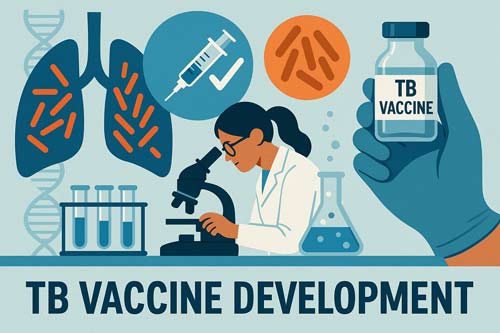
Limitations of the BCG Vaccine in Adult TB Prevention
The Bacillus Calmette–Guérin (BCG) vaccine has been administered to humans for nearly a century, yet its limitations have become increasingly apparent in adult TB prevention. These shortcomings explain why tuberculosis remains the first cause of death from a single infectious agent, despite widespread BCG vaccination programs worldwide [8].
BCG Efficacy in Infants vs Adults
Studies evaluating BCG vaccine effectiveness reveal striking discrepancies between age groups. BCG provides 70-80% protection against severe forms of TB in children, such as TB meningitis [9]. According to Martinez and colleagues, infant BCG vaccination demonstrated 37% effectiveness against all forms of tuberculosis in children younger than 5 years and 42% effectiveness against pulmonary disease in children younger than 3 years [10].
Contrary to its childhood benefits, the vaccine offers minimal protection for adults:
- Protection typically wanes after 10-15 years post-vaccination [9]
- Limited effectiveness when given to people over 16 years of age, with virtually no data for individuals over 35 years [9]
- No conclusive evidence of BCG protecting adults after close exposure to TB [10]
These age-dependent differences create a critical gap in TB prevention strategies. Throughout the world, BCG vaccination policies are typically focused on infants, yet most TB transmission occurs through adult pulmonary cases [10]. Adults comprise the majority of global TB burden, essentially making the current vaccine strategy inadequate for controlling transmission chains.
Lack of Protection Against Pulmonary TB
The BCG vaccine’s most consequential limitation is its failure to protect against pulmonary tuberculosis—the only form of infectious TB that drives transmission [11]. When directly measured, the TB vaccine reduces infection risk by merely 20% compared to truly effective vaccines like measles that provide 95% or greater protection [12].
Fundamentally, several factors contribute to BCG’s poor performance against pulmonary TB:
- Delayed immune response—even in vaccinated individuals, activated T cells don’t arrive at infection sites for approximately two weeks, allowing bacteria to multiply substantially [12]
- Varied immunogenicity between different BCG strains resulting from decades of laboratory passages [8]
- Environmental factors in developing countries, including exposure to helminth infections that induce Th2 responses contrary to the Th1 responses needed for TB protection [11]
Above all, these limitations highlight why BCG cannot prevent the form of TB responsible for most disease transmission. This shortcoming explains why TB continues to cause more than a million deaths annually, despite a 47% drop in TB mortality rate since 1990 [8].
BCG Revaccination Trials and Outcomes
Given BCG’s inadequacies, multiple clinical trials have explored whether revaccination might enhance protection, albeit with largely disappointing results. In a Brazilian trial with adolescents aged 7-14 years, BCG revaccination showed only 9% efficacy over 5 years and 12% over 9 years of follow-up [13]. Important to realize, these modest benefits varied by location—Salvador showed 19% efficacy while Manaus showed virtually none (1%) [13].
On the contrary, a large Malawian trial involving over 46,000 participants aged 3 months to 70 years found no protection against confirmed TB infection after 6-9 years of follow-up [13]. In fact, researchers noted a higher tuberculosis incidence in the revaccinated group (incidence rate ratio 1.43) [13].
A recent Brazilian healthcare worker trial likewise found no evidence for protection against QFT Plus conversion, either initial or sustained [13]. This outcome contrasts with a South African adolescent study that reported a 45.4% reduction in sustained QFT conversion after BCG revaccination [14], though this finding requires confirmation in an ongoing replication study.
In essence, the accumulated evidence indicates that BCG revaccination offers inconsistent and typically minimal protection, reinforcing the urgent need for novel tuberculosis vaccines specifically designed to protect adults against pulmonary disease [15].
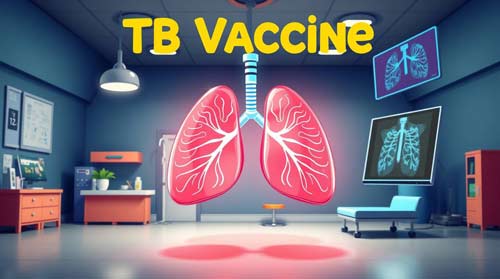
New TB Vaccine Candidates in the 2025 Clinical Pipeline
Breakthrough innovations in tuberculosis vaccine development have transformed the 2025 clinical pipeline, offering new hope for effective TB prevention strategies beyond BCG. Currently, 17 candidates are undergoing clinical evaluation, with several in advanced stages of testing.
M72/AS01E Phase 3 Trial Design and Efficacy
M72/AS01E, a protein/adjuvant subunit vaccine, stands as the most advanced TB vaccine candidate. In phase 2b trials, it demonstrated 49.7% efficacy at 36 months in preventing active pulmonary TB among latent TB-infected individuals [16]. This unprecedented result prompted the launch of a phase 3 trial enrolling up to 20,000 participants across seven countries: South Africa, Zambia, Malawi, Mozambique, Kenya, Indonesia, and Vietnam [17]. Remarkably, recruitment has progressed a year ahead of schedule, with 90% of participants already enrolled [17]. The trial includes three cohorts: 18,000 HIV-negative MTB-infected participants, 1,000 HIV-negative MTB-uninfected participants, and 1,000 people with HIV [18].
VPM1002 and MTBVAC: Live Attenuated Approaches
Two live attenuated vaccines have reached phase 3 trials. VPM1002, a recombinant BCG vaccine developed in Germany and licensed to the Serum Institute of India, enhances immunity by replacing the urease C gene with the Listeria monocytogenes listeriolysin O gene [1]. This modification allows better access of bacterial components to the cytosol, improving immune activation [19].
MTBVAC, conversely, originates from an attenuated M. tuberculosis clinical isolate with deleted phoP and fadD26 virulence genes [20]. Distinctively, it retains the ESAT-6 antigen (absent in BCG) yet cannot secrete it due to the phoP deletion [1]. This vaccine entered a large-scale safety and efficacy trial in February 2024, involving approximately 4,300 participants with latent TB across Kenya, Tanzania, and South Africa [21].
Subunit Vaccines: H56:IC31, ID93/GLA-SE, and GamTBvac
Various subunit vaccines target different TB stages:
- H56:IC31 combines three antigens (Ag85B, ESAT-6, Rv2660c) with IC31 adjuvant, though recent phase 2b results were negative [16]
- ID93/GLA-SE features four MTB antigens (Rv1813, Rv2608, Rv3619, Rv3620) with GLA-SE adjuvant, showing promising safety and immunogenicity [1]
- GamTBvac combines TB antigens ESAT-6, CFP10, and Ag85A with a dextran/CpG adjuvant, currently in phase 3 trials [22]
Inactivated Vaccines: DAR-901 and Vaccae
DAR-901, an inactivated M. obuense whole-cell vaccine, demonstrated protection against TB in mice when used as a BCG booster [23]. Yet, human trial results have been mixed [24]. Vaccae, another inactivated vaccine, has completed phase 3 trials and shows potential as an adjunct to standard TB treatment [2].
mRNA and Viral Vector Platforms in Early Trials
Following COVID-19 vaccine success, mRNA platforms have entered TB vaccine development. BioNTech’s polyvalent mRNA candidate BNT164 combines antigens from acute, recovery, and latent TB infection stages, currently undergoing phase 1 evaluation [25]. Meanwhile, viral vector approaches utilizing adenovirus and modified vaccinia Ankara vectors continue early-stage development [2].
Challenges in TB Vaccine Development and Evaluation
Developing effective tuberculosis vaccines faces profound scientific hurdles that have slowed progress for decades. These challenges span from fundamental biological understanding to practical implementation concerns.
Lack of Correlates of Protection
- A major challenge in tuberculosis (TB) vaccine development is the absence of validated correlates of protection. Reliable biomarkers that can predict vaccine-induced immunity remain undefined, limiting the ability to evaluate and compare candidate vaccines effectively[26].
- Interferon-gamma (IFN-γ), once considered a promising marker, has significant limitations. High IFN-γ responses have been observed in both minimal and progressive TB, making it an unreliable indicator of protective immunity[27]. Moreover, IFN-γ cannot consistently differentiate between latent infection and active disease[27], and under certain conditions, may even enhance intracellular bacterial replication rather than control it[27].
- Given these limitations, the focus has shifted from relying on a single biomarker to identifying a combination of immune correlates. A multiparametric approach is now considered essential to capture the complexity of host responses and to assess vaccine efficacy across diverse populations and platforms[26].
- In certain circumstances, IFN-γ may actually promote intracellular bacterial replication [27]
Instead of singular markers, researchers now believe a panel of correlates will be necessary to reflect efficacy across different vaccine platforms and populations [26].
Animal Model Limitations for MTB
No animal species perfectly mimics human TB pathology. Notably, mice—the most commonly used model—lack caseating granulomas and lung cavitation seen in human disease [28]. Guinea pigs offer improved lung pathology but remain difficult to maintain with limited immunological reagents [28]. Non-human primates (NHPs) most closely resemble human disease progression but represent merely 1% of published TB research due to ethical concerns and prohibitive costs [29].
Trial Design and Endpoint Harmonization
Clinical evaluation presents unique obstacles. Measuring MTB infection as an endpoint remains problematic because no validated assays directly detect viable MTB in healthy individuals [3]. Serial IGRA testing introduces substantial variability from both biological and technical factors [3]. Furthermore, trials must consider special populations such as children and those with extrapulmonary TB, requiring carefully selected primary and secondary endpoints [3].
Funding Gaps and Regulatory Barriers
TB vaccine development remains severely underfunded. Present annual investment reaches only US$115 million versus the estimated US$790 million required [30]. This funding shortage, coupled with complex regulatory pathways, has discouraged pharmaceutical industry involvement [31]. Late-stage efficacy trials are particularly resource-intensive, requiring years of follow-up and thousands of participants [31].
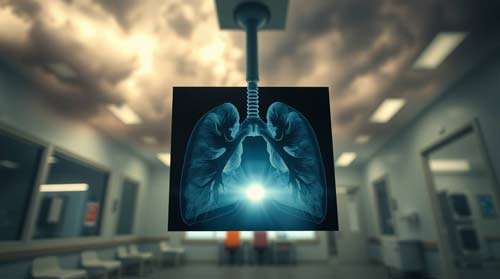
Future Directions for TB Vaccine Research and Deployment
Innovative approaches to tuberculosis vaccine development are emerging to address current limitations and accelerate progress toward effective TB prevention. Recent advancements focus on novel testing methodologies, delivery systems, and global coordination efforts.
Controlled Human Infection Models (CHIM) for TB
Controlled human infection models represent a promising approach to accelerate TB vaccine development by allowing cost-effective evaluation of candidate vaccines [32]. While using virulent M. tuberculosis remains ethically unacceptable, BCG serves as a surrogate challenge agent in current CHIM studies [32]. This approach offers several advantages:
- Prioritization of promising vaccine candidates before costly field trials
- Detailed examination of host-pathogen interactions
- Potential identification of correlates of protection currently lacking in TB research
Ongoing CHIM studies explore both intradermal and aerosol BCG administration routes [33]. The aerosol BCG CHIM trial at Oxford University has demonstrated safety and tolerability in healthy adults with no previous BCG exposure [6]. Additionally, researchers are evaluating modified BCG strains containing fluorophore reporter genes to reduce the need for invasive sampling [32].
Mucosal Immunity and Aerosol Delivery Strategies
Respiratory mucosal vaccination offers distinct advantages over traditional injection methods. Clinical trials of aerosolized BCG and adenovirus-vectored vaccines demonstrate these approaches can induce robust airway tissue-resident memory T cells without major adverse events [4]. In fact, inhaled aerosol vaccination induces superior respiratory mucosal immunity compared to intramuscular routes [5].
Current aerosol delivery technologies range from nebulizers to repurposed inhalers [34]. The ideal delivery system must ensure accurate dosing while remaining cost-effective for global deployment [34]. Furthermore, aerosolized vaccine delivery could potentially extend to children as young as one year, as demonstrated by measles and influenza vaccines [5].
Integration with WHO End TB Strategy Goals
The WHO TB Vaccine Accelerator Council, launched in 2023, plays a central role in advancing the development and equitable distribution of new tuberculosis (TB) vaccines[35]. The council operates through several key strategies:
- Securing sustainable financing through public–private partnerships and global funding mechanisms
- Creating market incentives to stimulate innovation and accelerate vaccine development
- Engaging policymakers across sectors to prioritize TB vaccine research and deployment
Achieving the WHO End TB Strategy targets—a 95% reduction in TB-related deaths and a 90% reduction in TB incidence by 2035—will require the development of effective vaccines for all age groups[35].
To meet these goals, the current global investment in TB vaccine research, approximately US$115 million annually must increase significantly. An estimated US$790 million per year is needed to support the discovery, development, and delivery of new TB vaccines[36].
These efforts align with the broader global health agenda and are essential for accelerating progress toward TB elimination.
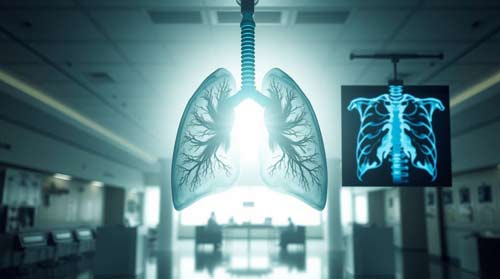
Conclusion
The quest for an effective tuberculosis vaccine represents one of the most challenging endeavors in modern vaccinology. Despite a century of BCG vaccination, tuberculosis remains a formidable global health threat with 1.6 million annual deaths. Nevertheless, the current clinical pipeline offers unprecedented hope for controlling this persistent pathogen.
M72/AS01E stands at the forefront of this new generation of TB vaccines. Phase 2b trials demonstrating nearly 50% efficacy against pulmonary TB mark a watershed moment in TB prevention research. Likewise, innovative approaches such as VPM1002 and MTBVAC—both now in phase 3 trials—present viable alternatives through their genetically modified live attenuated platforms.
The path toward effective TB vaccines faces substantial obstacles:
- Lack of validated correlates of protection • Limited animal models that accurately reflect human disease • Complex trial design requirements • Chronic underfunding (US$115 million annually versus US$790 million needed)
These hurdles, though formidable, have not deterred scientific progress. Controlled human infection models using BCG as a surrogate challenge agent now offer a streamlined pathway for candidate evaluation. Additionally, aerosol delivery strategies targeting respiratory mucosal immunity show promise for inducing protective immune responses where they matter most—at the primary site of infection.
The WHO Tuberculosis Vaccine Accelerator Council’s establishment in 2023 underscores global commitment to this critical health priority. Therefore, achieving the End TB Strategy goals will require coordinated effort across scientific, financial, and policy domains. Although the challenges remain daunting, recent advances provide genuine optimism that effective tuberculosis vaccines protecting adults from pulmonary disease may finally become reality. The consequences could transform global health, preventing millions of deaths and ultimately bringing this ancient disease under control for future generations.

Frequently Asked Questions:
FAQs
Q1. Is there a new tuberculosis vaccine in development? Yes, several new tuberculosis vaccines are currently in clinical trials. The most promising candidate is M72/AS01E, which has shown nearly 50% efficacy against pulmonary TB in phase 2b trials. It is now undergoing a large-scale phase 3 trial involving up to 20,000 participants across seven countries.
Q2. When can we expect a new TB vaccine to be available? While an exact timeline is uncertain, significant progress is being made. The M72/AS01E vaccine’s phase 3 trial is running ahead of schedule, with 90% of participants already enrolled. If proven effective, it could potentially become the first new TB vaccine in over a century, targeting adolescents and adults.
Q3. What are the main challenges in developing an effective TB vaccine? Key challenges include the lack of validated correlates of protection, limitations in animal models that accurately reflect human disease, complex trial design requirements, and chronic underfunding. Overcoming these obstacles is crucial for advancing TB vaccine research.
Q4. How does the current BCG vaccine compare to new vaccine candidates? The BCG vaccine, while effective in preventing severe childhood TB, offers limited protection against adult pulmonary TB. New vaccine candidates aim to address this gap by targeting different stages of TB infection and utilizing innovative approaches such as protein subunit vaccines and live attenuated strains.
Q5. What role does the WHO play in TB vaccine development? The World Health Organization has established the TB Vaccine Accelerator Council to facilitate the development of and equitable access to new TB vaccines. This initiative aims to identify sustainable financial solutions, create market incentives, and advocate with decision-makers to accelerate progress towards effective TB prevention strategies.

References:
[1] – https://pmc.ncbi.nlm.nih.gov/articles/PMC10820143/
[2] – https://www.nature.com/articles/s41541-023-00750-7
[3] – https://pmc.ncbi.nlm.nih.gov/articles/PMC9488660/
[4] – https://insight.jci.org/articles/view/155655
[5] – https://pmc.ncbi.nlm.nih.gov/articles/PMC6961305/
[6] – https://www.thelancet.com/journals/laninf/article/PIIS1473-3099(24)00178-6/fulltext
[7] – https://www.nature.com/articles/nri3259
[8] – https://pmc.ncbi.nlm.nih.gov/articles/PMC4950406/
[9] – https://patient.info/doctor/bcg-vaccination
[10] – https://www.thelancet.com/journals/langlo/article/PIIS2214-109X(22)00325-4/fulltext
[11] – https://pmc.ncbi.nlm.nih.gov/articles/PMC11319110/
[12] – https://medicine.washu.edu/news/study-helps-explain-tuberculosis-vaccines-ineffective/
[13] – https://www.thelancet.com/journals/laninf/article/PIIS1473-3099(23)00818-6/fulltext
[14] – https://www.nature.com/articles/s41467-024-49050-1
[15] – https://www.bu.edu/sph/news/articles/2022/bcg-vaccine-prevents-tuberculosis-in-young-children-but-not-adults/
[16] – https://www.treatmentactiongroup.org/wp-content/uploads/2025/03/2024_pipeline_TB_vaccines_final.pdf
[17] – https://healthpolicy-watch.news/promising-phase-3-trial-of-tuberculosis-vaccine-is-running-ahead-of-schedule/
[18] – https://www.gatesmri.org/mri-initiates-phase-3-clinical-trial-tuberculosis-vaccine-candidate/
[19] – https://portlandpress.com/biochemist/article/43/4/28/229249/Live-attenuated-vaccines-for-tuberculosis
[20] – https://www.sciencedirect.com/science/article/pii/S0300289623003058
[21] – https://www.cidrap.umn.edu/tuberculosis/first-doses-announced-phase-2-trial-tb-vaccine-candidate
[22] – https://pmc.ncbi.nlm.nih.gov/articles/PMC10457792/
[23] – https://pmc.ncbi.nlm.nih.gov/articles/PMC5173179/
[24] – https://pubmed.ncbi.nlm.nih.gov/31120957/
[25] – https://pmc.ncbi.nlm.nih.gov/articles/PMC11869779/
[26] – https://www.frontiersin.org/journals/immunology/articles
/10.3389/fimmu.2022.869057/full
[27] – https://pmc.ncbi.nlm.nih.gov/articles/PMC4515748/
[28] – https://pmc.ncbi.nlm.nih.gov/articles/PMC6094516/
[29] – https://journals.plos.org/plospathogens/article?id=10.1371/journal.ppat.1006421
[30] – https://pmc.ncbi.nlm.nih.gov/articles/PMC8884775/
[31] – https://pmc.ncbi.nlm.nih.gov/articles/PMC6305224/
[32] – https://www.frontiersin.org/journals/immunology/articles/
10.3389/fimmu.2023.1211388/full
[33] – https://wellcomeopenresearch.org/articles/8-424
[34] – https://www.frontiersin.org/journals/immunology/articles/
10.3389/fimmu.2023.1159084/full
[35] – https://www.who.int/teams/global-tuberculosis-program/research-innovation/vaccines
[36] – https://publichealth.jhu.edu/ivac/the-other-pandemic-the-promise-of-tb-vaccines
